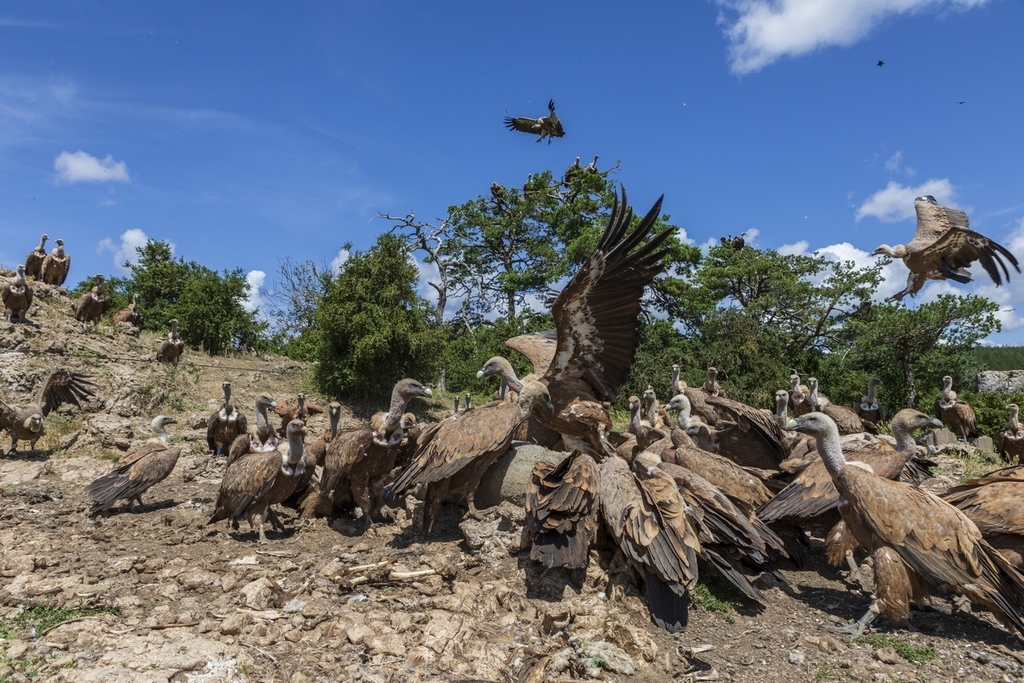Le Vautour fauve
Gyps fulvus
Historiquement, les vautours étaient présents dans tous les massifs montagneux de France. Aujourd’hui, ils font partie des espèces les plus menacées d’Europe. A cause du braconnage, la population française a quasiment disparu, seules les Pyrénées abritent encore des vautours fauves.
De nombreux programmes de réintroduction ont été mis en œuvre en France depuis les années 1980 (Parc national des Cévennes, Parcs naturels régionaux du Luberon et du Vercors, etc.) pour consolider la population de cet oiseau en France. Actuellement, on compte environ 593 couples en France, un nombre qui augmente chaque année.
Mais il a fallu du temps pour reconstituer les populations, c’est pourquoi dans certaines zones, les locaux considèrent les vautours comme des espèces « envahissantes » car depuis plusieurs générations ces rapaces n’étaient plus présents sur le territoire.
Reconnaissable grâce à son plumage brun cendré et son collier blanc, ses grandes ailes en font l’un des plus grands rapaces avec une envergure pouvant atteindre 2,80 m. Il pèse entre 8 et 11 kg et son corps peut mesurer jusqu’à 1 m.
C’est un oiseau nécrophage, il se nourrit exclusivement des parties tendres des cadavres de mammifères sauvages (chamois, cerfs…) et domestiques (moutons, chèvres…). Longévité : plus de 30 ans. Les couples de vautours fauves se forment pour la vie et vivent en colonies sur les falaises rocheuses. La femelle pond au maximum un œuf par an.
Afin de stabiliser la population, des collaborations se mettent en place entre les éleveurs et la LPO (Ligue de Protection des Oiseaux). Les moutons morts sont collectés et placés sur des « parcelles » pour nourrir les vautours. Cette pratique a une double utilité, elle permet d’apporter un complément de nourriture aux oiseaux et en contrepartie, elle permet aux éleveurs de ne pas contaminer le troupeau lorsque la brebis est morte de maladie ou de ne pas faire appel aux services d’équarrissage. (qui ne sont pas toujours à proximité).
